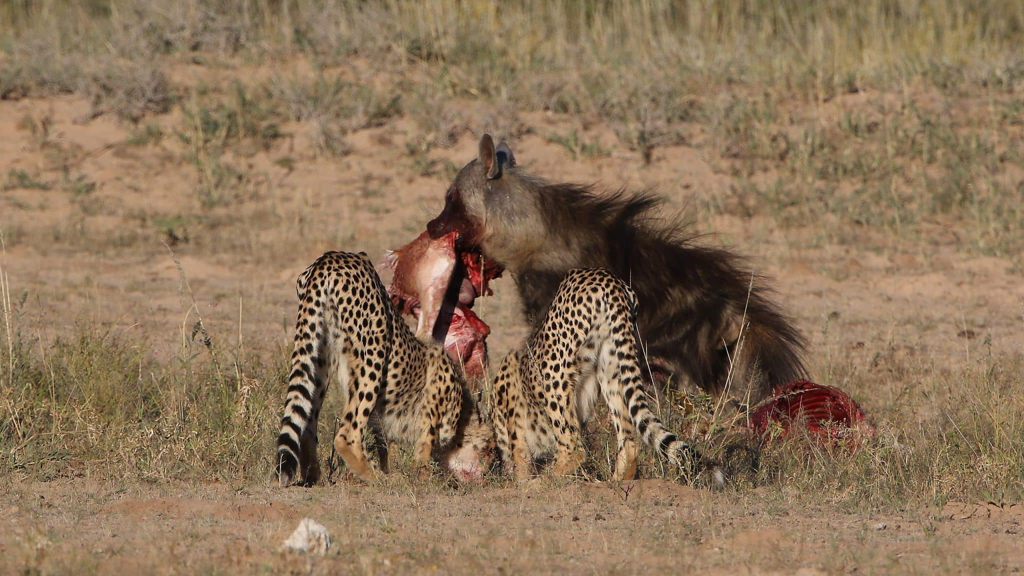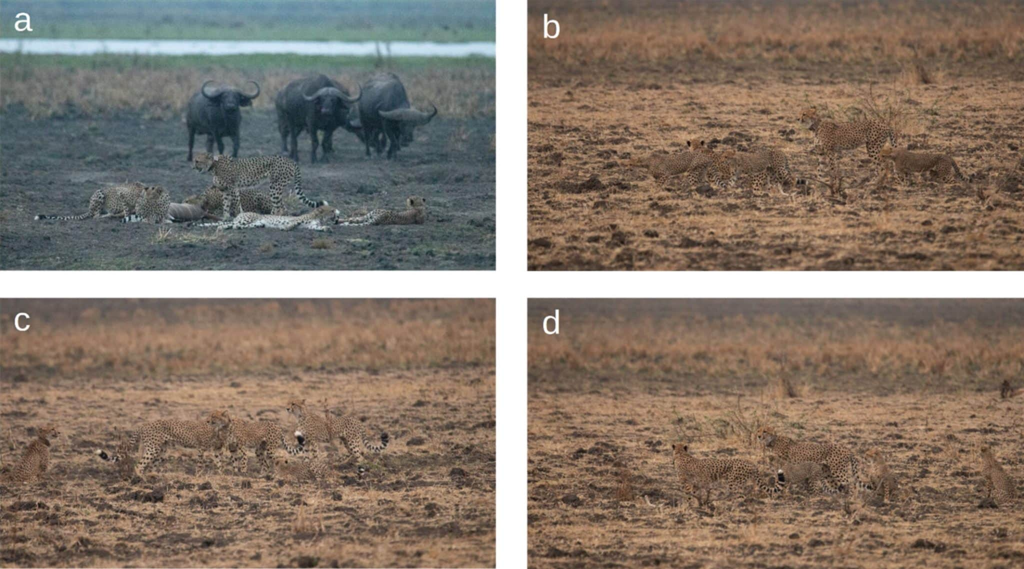Zoologists explain why cheetahs occasionally consume carrion.
Cheetahs (Acinonyx jubatus) are top-notch predators, and it's worth noting that they are the fastest land mammals. They inhabit Africa and the Middle East, but are widely dispersed over a large area. According to data from 2017, on average, only one cheetah can be found per 200 square kilometers of their range. These cats are also fascinating due to their feeding habits.
In comparison to their competitors—lions and leopards—they are not as large, so when hunting, cheetahs eat until full and leave the remains for scavengers like hyenas. In the wild, cheetahs typically avoid carrion as it can be dangerous. They might encounter a strong and hungry rival, and even if they manage to avoid such encounters, there’s still a risk of disease if the animal whose carcass they consume was sick or poisoned.
However, recently, naturalists observed these predators feeding on already killed prey in three African reserves. Such behavior had been noted among cheetahs before, but biologists had not been able to explain it. This time, there was enough data to determine the most likely reasons that led the cats to consume carrion. Zoologists from the Republic of South Africa (RSA) examined the new observations and presented their thoughts in a recent article in the journal Ecology and Evolution.

The earliest of the documented cases occurred in early autumn 2019 at the Madikwe Reserve in South Africa, where six cheetahs were residing at the time. Naturalists were monitoring leopards and had placed two baits—50 kilograms of fresh impala meat (Aepyceros melampus)—in trees. However, scavengers arrived first: hyenas and jackals, and on two evenings in September, the male cheetahs also showed up.
The second episode was recorded on October 13, 2021, at Liwonde National Park in southern Malawi. One group of cheetahs killed a large kudu (Tragelaphus strepsiceros) and began to eat it. During their meal, another group of cheetahs (a mother with two cubs) approached and waited for the first group to finish. Once the hunters were full, the newcomers started to finish off the kudu. Notably, the following day, the cats showed no signs of conflict and interacted calmly.
The final instance of carrion consumption was observed at the Tswalu Kalahari Reserve in South Africa on July 13, 2023. A female cheetah with her cubs killed a springbok (Antidorcas marsupialis) and the group fed from noon until 5 PM. When the family left, jackals arrived at the carcass and were gnawing on the springbok until an old male cheetah approached, sniffed the remains, and began to eat alone.

Zoologists explained this atypical behavior of cheetahs with several reasons. The old male cheetah, who was eating the meat after the jackals, was likely influenced by the death of his brother in 2023. They had lived and hunted in a coalition, but as researchers suggested, when the ten-year-old cheetah was left alone, it became harder for him to procure food. Thus, he may not have been averse to scavenging.
The female cheetah and her two cubs, who were finishing off the kudu after another group, probably also opted for carrion because it was easier: this way, the mother does not risk herself while hunting and does not leave her cubs without food. Additionally, the urgency of finding food may have outweighed the danger of a potential confrontation with rival predators. In the Madikwe Reserve, where scavengers and cheetahs were drawn to the meat baits for the leopards, the authors of the article suggest that this happened because the area has many large carnivores competing for the same prey. Hyenas, lions, and other predators take meat from each other, leading cheetahs, for example, to supplement their diet with carrion.
However, these circumstances prompted the observed cheetahs to engage in atypical feeding. A real reason could be the fact that all individuals were moved from one reserve to another at different times. During the transfer, the animals were kept in bomas (spacious enclosures surrounded by a fence), where caretakers fed them meat. Thus, despite being born and raised in the wild, their exposure to a new feeding format may have altered the cats' behavior. It is likely that the cheetahs realized that hunting was not as essential for sustenance, which, according to researchers, leads to various consequences—ranging from the risk of infection from carcasses to reduced predation pressure and traumatic or fatal encounters with competitors.